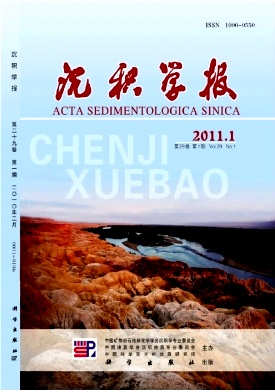Decomposition of the Grainsize Component and Its Climate Implication from Lake Barkol, Xinjiang
- Received Date: 1900-01-01
- Rev Recd Date: 1900-01-01
- Publish Date: 2011-02-10
-
Key words:
- Lake Barkol /
- grainsize /
- empirical orthogonal function /
- Holocene /
- effective moisture /
- dust activity
Abstract: A 426 cm core from Lake Barkol, eastern Tian Shan, provides the evidence of Holocene climate in Westerly dominated Asia. Here, we present a grainsize component series decomposed by empirical orthogonal function and the chronology is based on radio carbon dating. The results show that the EOF1 component has a high correlation coefficient (0.64) with the volume percentage of the component less than 2 μm, furthermore it is similar to the evolution pattern of oxygen isotope from carbonate which is a proxy indicating the regional effective moisture, so the EOF1 component is an indicator of the effective moisture in the region. Modern dust grainsize analysis from Barkol shows a peak percentage around 61.2 μm. Coincidently, the EOF2 component has a high positive correlation coefficient with the grainsize ranging from 45 to 138 μm, which suggests that the EOF2 indicates the regional dust activity. EOF results suggested that the effective moisture was low and the dust activity was strong in midHolocene, which was consistent with the midHolocene arid interval occurred in the northern Mongolia Plateau. The enhanced Siberia high intensified the Westerly circulation and winter monsoon, and which could be the main reason for the arid and dusty midHolocene climate in the research region.
| Citation: | L Yanbin. Decomposition of the Grainsize Component and Its Climate Implication from Lake Barkol, Xinjiang[J]. Acta Sedimentologica Sinica, 2011, 29(1): 134-142. |






 DownLoad:
DownLoad: